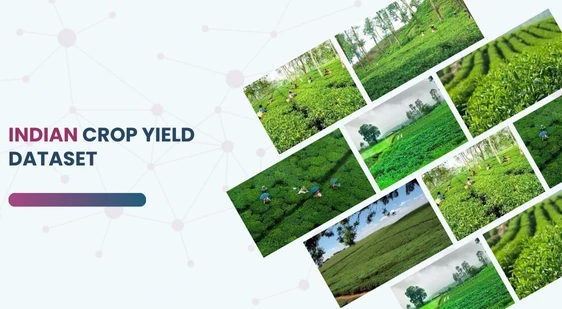Indian Crop Yield Dataset
Home » Dataset Download » Indian Crop Yield Dataset
Indian Crop Yield Dataset
Datasets
Indian Crop Yield Dataset
File
Indian Crop Yield Dataset
Use Case
Indian Crop Yield Dataset
Description
Explore the detailed Indian Crop Yield Data from 1997, including production, area under cultivation, rainfall, fertilizer use, and state-wise information on major crops like rice, wheat, and sugarcane.


Description:
This dataset offers in-depth information on crop yields across various states in India for the year 1997. It includes key details about multiple crops, such as rice, wheat, sugarcane, pulses, and more, providing insights into their production levels, the area of cultivation, and seasonal cultivation patterns. It also encompasses additional factors like annual rainfall, fertilizer usage, pesticide application, and yield per crop, presenting a comprehensive view of Indian agriculture during that year.
Download Dataset
Key Features of the Dataset
- Detailed Crop Information: This dataset covers an extensive range of crops grown across India. Providing state-wise information on the production volume. The area dedicated to each crop, and specific cultivation periods. Crops like wheat, rice, and sugarcane are highlighted, among others.
- Supplementary Data:
- Rainfall Data: Annual rainfall records for each state and their correlation with crop yields offer valuable insights into how climatic conditions affect agricultural productivity.
- Fertilizer and Pesticide Usage: The dataset details the amount of fertilizer and pesticides used for each crop, enabling researchers to analyze the relationship between these inputs and crop performance.
- Irrigation and Land Use: Information on irrigation facilities and land use patterns provides context for yield variations between regions.
- Applications of the Dataset:
- Agricultural Research: This dataset can be utilized by agronomists and researchers to study historical agricultural trends, identify patterns, and evaluate the effectiveness of past agricultural policies.
- Predictive Models: The dataset allows for the development of predictive models for future yields, considering variables such as weather conditions and fertilizer usage.
- Policy Formulation: Policymakers can analyze the data to design and implement better agricultural policies, targeting efficient use of water, pesticides, and fertilizers to maximize crop output.
- Climate Impact Assessment: The dataset enables analysis of the influence of climatic conditions, such as monsoon patterns and drought periods, on agricultural productivity across different regions in India.
Advantages of Using This Dataset
- Granular Analysis: Researchers can conduct a granular, state-wise, and crop-wise analysis of agricultural productivity.
- Trend Analysis: The dataset offers a valuable resource for trend analysis over time, particularly when combined with similar datasets from other years.
- Sustainability Studies: Environmental researchers can study the impact of agricultural practices on sustainability by analyzing the use of fertilizers, pesticides, and water resources.
Future Use Cases
- Machine Learning Applications: The data can be applied in machine learning models to predict future crop yields based. On factors like rainfall patterns, fertilizer use, and other variables.
- Agro-Economic Research: Economists can explore the economic. Impact of crop yields on different regions and correlate it with income, pricing, and food security.
This dataset is sourced from Kaggle.
Contact Us

Quality Data Creation

Guaranteed TAT

ISO 9001:2015, ISO/IEC 27001:2013 Certified

HIPAA Compliance

GDPR Compliance

Compliance and Security
Let's Discuss your Data collection Requirement With Us
To get a detailed estimation of requirements please reach us.
